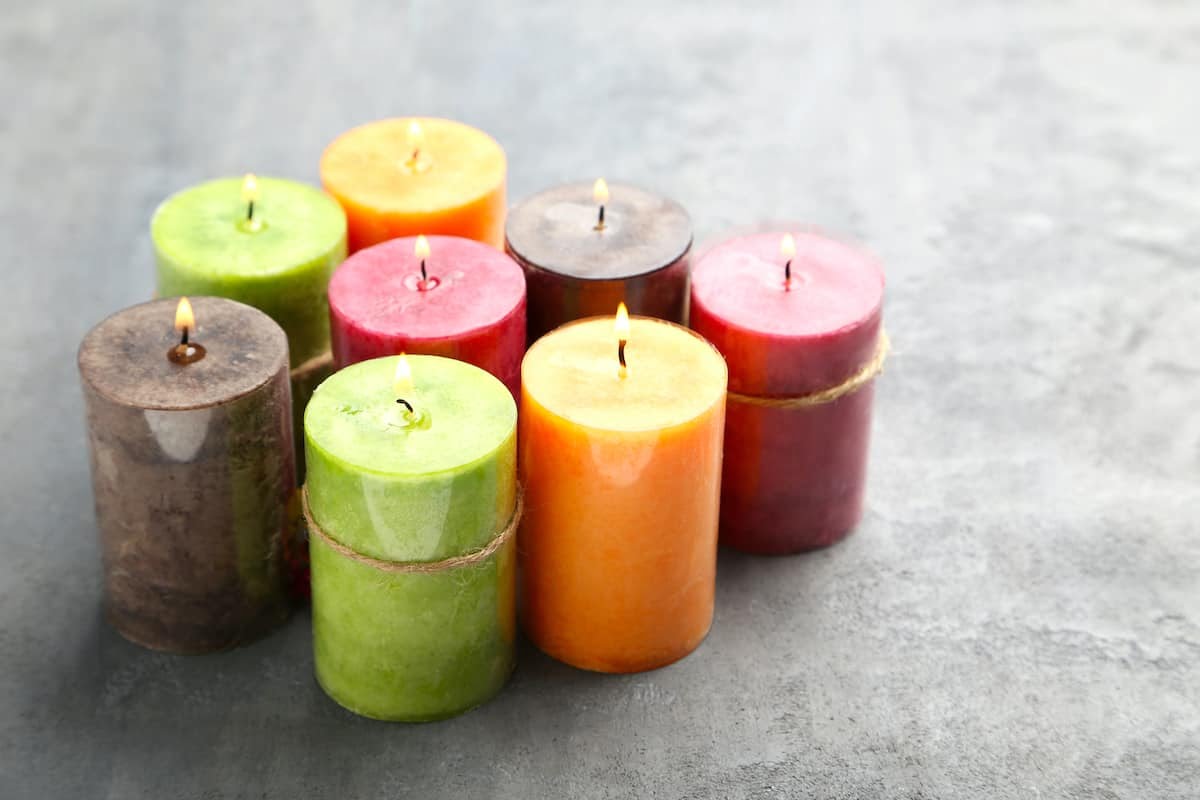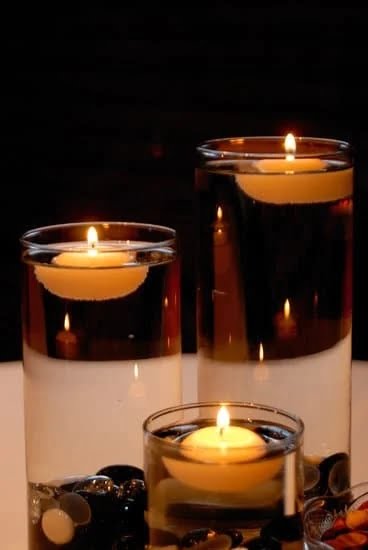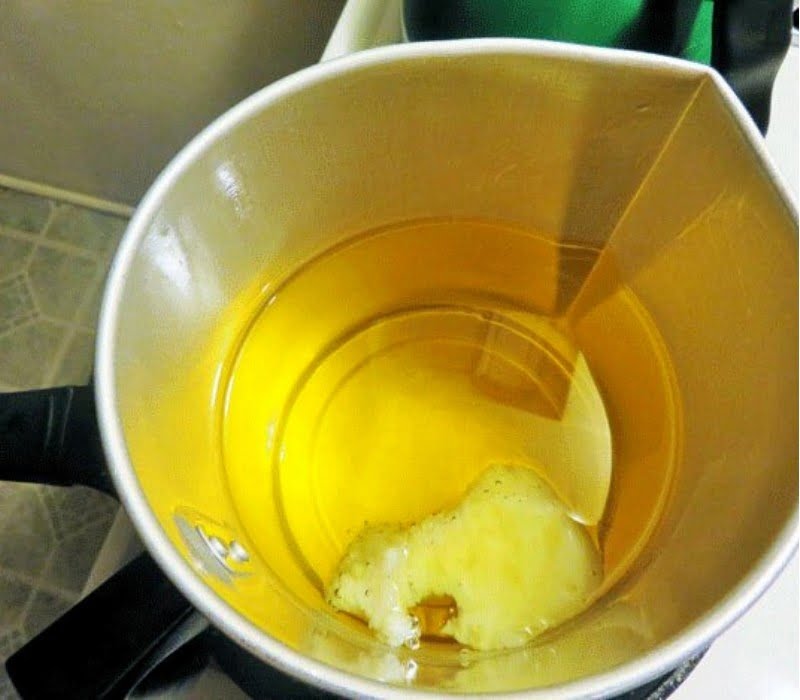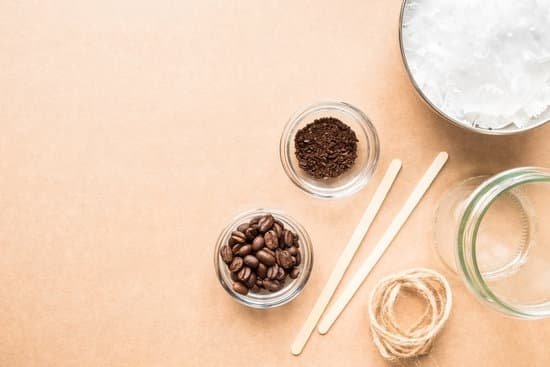Candle making is a captivating craft that allows individuals to express their creativity while creating a warm and inviting ambiance in their homes. One essential aspect of candle making that often goes overlooked is the selection of the right oils to achieve a captivating scent experience. In this article, we will delve into the world of candle making, highlighting the importance of choosing the appropriate oils for a truly aromatic journey.
For novice candle makers, diving into the world of essential oils can feel overwhelming. With so many options available, it can be challenging to determine which oils are best suited for candles. The key to successful candle making lies not only in finding high-quality oils but also in understanding their unique characteristics and how they interact with various waxes.
Essential oils have long been celebrated for their therapeutic properties and enchanting aromas. However, it is crucial to distinguish between essential oils, fragrance oils, and synthetic oils when it comes to candle making. Each type has its own qualities and considerations, all contributing to the overall scent experience during burning.
Join us as we explore different types of essential oils, unveil top scents renowned for their aroma when burned as candles, discover expert tips on blending custom fragrances, and understand how fragrance notes come together to create harmonious scents.The role of base notes, middle notes, and top notes will be discussed alongside considerations for different candle types and waxes.
Embark on your scented candle journey with confidence by learning about essential oil concentration guidelines for desired strength and safety precautions necessary when handling these potent substances. We’ll also share insider tricks on optimizing the scent throw of your candles through hot and cold scent throw techniques.
Choosing the right oils for candle making is an integral part of igniting your creativity and crafting memorable experiences through scent. So let us guide you through this aromatic adventure as you explore new scents, select perfect combinations, and create candles that infuse your space with enchanting fragrances.
Understanding the Different Types of Essential Oils
Essential oils play a crucial role in candle making, as they are responsible for the aroma and scent experience of the candles. However, it is important to understand the different types of essential oils available before choosing the right one for your candles.
There are three main types of oils used in candle making: essential oils, fragrance oils, and synthetic oils. Essential oils are derived from natural plants and possess their distinct aromas. They are extracted through processes like steam distillation or cold-pressing, capturing the pure essence of the plant. Examples of essential oils include lavender, peppermint, and eucalyptus.
Fragrance oils, on the other hand, are synthetic compounds that mimic natural scents. They are created in laboratories using various chemicals and can offer a wider range of fragrances compared to essential oils. Synthetic oils may also be used in candle making to achieve specific scents that cannot be replicated with natural ingredients.
To help you choose between these options, it is important to consider your personal preferences and goals for your candles. If you prefer a more natural approach and enjoy the therapeutic benefits of plants, then essential oils might be the ideal choice for you.
On the other hand, if you are looking for a broader range of scents or want to create unique fragrance blends that cannot be achieved with natural ingredients alone, then fragrance or synthetic oils might be more suitable.
In summary, understanding the different types of essential oils is crucial when it comes to selecting an oil for your candle making journey. Whether you choose to use essential oils, fragrance oils or synthetic oils depends on your personal preferences and desired outcome for your candles. It’s always helpful to explore the specific characteristics and benefits of each type before making a decision.
| Type | Description |
|---|---|
| Essential Oils | Natural oils derived from plants that possess their distinct aromas |
| Fragrance Oils | Synthetic compounds that mimic natural scents and offer a wider range of fragrances |
| Synthetic Oils | Chemically created oils used to achieve specific scents that cannot be replicated with natural ingredients |
Best Essential Oils for Scented Candles
When it comes to creating scented candles, choosing the right essential oils is essential. These oils are responsible for providing the delightful aroma that fills the air when a candle is burning. There are a wide variety of essential oils available, each with its own unique characteristics and benefits. Here are some of the best essential oils to consider for your scented candles:
- Lavender: Known for its calming properties, lavender essential oil is a popular choice for candles. It has a sweet, floral scent that promotes relaxation and can help create a peaceful atmosphere.
- Peppermint: If you’re looking to create a refreshing and energizing atmosphere, peppermint essential oil is an excellent choice. Its invigorating aroma can help boost mood and enhance focus.
- Vanilla: Vanilla essential oil has a warm and comforting scent that can add a touch of sweetness to your candles. It is often used in combination with other oils to create cozy and inviting fragrances.
- Eucalyptus: With its fresh and herbal aroma, eucalyptus essential oil is perfect for promoting clarity and relaxation. It can help clear the mind and relieve stress, making it ideal for use in candles meant for relaxation or meditation.
These are just a few examples of the best essential oils to use in scented candles. Other popular options include rosemary, lemongrass, bergamot, and cedarwood. Experimenting with different combinations of these oils can result in unique scent profiles that suit your preferences.
It’s important to note that when using essential oils in candle making, it’s recommended to choose high-quality oils specifically intended for this purpose. This ensures that the fragrance will be long-lasting and enjoyable. As with any product, it’s always a good idea to do a patch test before making larger quantities of scented candles to ensure that you don’t have any adverse reactions to the oils.
By carefully selecting the best essential oils for your scented candles, you can create a truly immersive and enjoyable scent experience for yourself and others.
Essential Oil Combinations for Beautiful Candle Fragrances
One of the joys of candle making is the ability to create custom scents by blending various essential oils. By combining different oils, you can elevate the fragrance of your candles and create beautiful scent profiles. Here are some expert tips on essential oil combinations for beautiful candle fragrances:
Citrus Dream
- Combine equal parts of sweet orange, lemon, and grapefruit essential oils.
- This refreshing blend provides a bright and uplifting aroma that is perfect for creating a vibrant atmosphere in any space.
Cozy Vanilla Lavender
- Mix three parts vanilla essential oil with one part lavender essential oil.
- The combination of the warm and comforting vanilla with the soothing and relaxing lavender creates a cozy ambiance that helps to promote relaxation and restful sleep.
Woodsy Escape
- Blend equal parts of cedarwood, sandalwood, and patchouli essential oils.
- This earthy combination brings warmth and depth to your candles, evoking a sense of being surrounded by nature.
Floral Symphony
- Combine rose, jasmine, and ylang-ylang essential oils in a 2:1:1 ratio.
- This floral medley creates a romantic and enchanting fragrance that adds elegance to any space.
Fresh Linen
- Mix equal parts of bergamot, tea tree, and eucalyptus essential oils.
- This clean and crisp blend mimics the scent of freshly laundered linens, giving your candles a fresh and inviting aroma.
Remember, when blending essential oils for candles, it’s important to start with small amounts and test them before making larger batches. Some combinations may work better with certain candle types or waxes than others, so experimentation is key in finding your perfect fragrance blend.
By exploring different combinations and expressing your creativity, you can create unique and beautiful candle fragrances that will delight your senses and those around you.
The Role of Base Notes, Middle Notes, and Top Notes in Candle Making
When it comes to creating a perfectly balanced scent experience in your candles, understanding the role of base notes, middle notes, and top notes is essential. These fragrance notes are what give your candles depth and complexity, making them more than just a simple aroma. By strategically choosing essential oils that fall into each category, you can create unique and captivating scents that will leave a lasting impression.
Understanding Fragrance Notes
In the world of perfumery and candle making, fragrances are often categorized into three main categories: base notes, middle notes (also known as heart notes), and top notes. Each note plays a specific role in creating a well-rounded fragrance profile.
- Base Notes: These are the foundation of your candle’s scent. Base notes tend to be rich, warm, and long-lasting. They provide depth and stability to the overall fragrance. In candle making, base notes can come from essential oils such as patchouli, vanilla, sandalwood, or musk.
- Middle Notes: Also referred to as heart notes, these scents emerge once the top note evaporates. Middle notes add body and fullness to the fragrance composition. They serve as a bridge between the top and base notes. Popular middle note essential oils include lavender, rosemary, ylang-ylang, or jasmine.
- Top Notes: These are the initial scents that greet your senses when you first smell the candle. Top notes are light, refreshing, and evaporate relatively quickly. They create an immediate impact but don’t last as long as middle or base notes. Common top note essentials oils used in candle making include citrus oils like lemon or bergamot, peppermint or eucalyptus.
Creating Balanced Scent Profiles
When selecting essential oils for your candles based on their fragrance note classification; it’s crucial to strike a balance between all three notes. The goal is to create a harmonious blend where the scents evolve and unfold over time, creating an enjoyable olfactory experience.
A well-balanced scent profile often consists of a combination of top, middle, and base notes. For example, you can start with a refreshing burst of citrus (top note), followed by the delicate floral aroma (middle note), and finally, the warm and grounding scent of sandalwood or vanilla (base note).
By understanding how each fragrance note works and complementing them with appropriate essential oils, you can create candles that tantalize the senses from start to finish. Experimentation and creativity are key when it comes to finding the perfect combination of essential oils to achieve your desired scent profile in candle making.
Considerations for Different Candle Types and Waxes
When it comes to candle making, the type of wax you choose plays a crucial role in the overall performance and scent throw of your candles. Different waxes have different burning properties, and certain essential oils work best with specific types of wax. Below are some considerations to keep in mind when selecting oils for different candle types and waxes.
Soy Wax
Soy wax has gained popularity for its natural, clean-burning properties. It also has excellent scent retention, making it a great choice for scented candles. When using soy wax, it is important to select essential oils that are compatible with its low melting point and soft texture. Oils like lavender, vanilla, lemon, and chamomile work well with soy wax, offering a soothing and calming aroma.
Beeswax
Beeswax is another all-natural option known for its long burn time and beautiful golden hue. It has a naturally sweet scent that complements various essential oils. Beeswax blends well with warm and earthy fragrances like cinnamon, patchouli, sandalwood, and cedarwood. These oils not only enhance the natural aroma of beeswax but also create a cozy atmosphere when burned.
Paraffin Wax
Paraffin wax is one of the most commonly used waxes in candle making due to its affordability and versatility. This type of wax can hold a high concentration of fragrance oil, making it ideal for achieving strong scent throw. Almost any essential oil can be used with paraffin wax, allowing for endless possibilities in creating unique scents.
It’s important to note that regardless of the type of candle you’re making or the wax you’re using, always ensure that your essential oils are suitable for use in candles. Some fragrance oils or synthetic oils may contain additives that could jeopardize the quality or safety of your candles. By choosing high-quality essential oils specifically designed for candle making, you can ensure a successful and enjoyable candle-making experience.
Choosing the Right Essential Oil Concentration for Desired Candle Strength
Candles are not only a beautiful addition to any space but also provide the opportunity to create a pleasant scent experience. Essential oils play a crucial role in achieving the desired fragrance in candles, and choosing the right concentration is key to achieving the perfect scent strength. In this section, we will explore the importance of understanding desired candle strength and provide guidelines on essential oil concentration based on personal preferences.
When it comes to selecting the right essential oil concentration for your candles, it’s important to consider personal preferences and the size of the area where the candle will be used. Some individuals prefer a subtle scent, while others enjoy a stronger fragrance that fills the room.
For those who prefer a milder scent, a concentration of 4-6% essential oil per pound of wax is generally recommended. This creates a subtle aroma that is noticeable when near the candle but does not overpower the space.
If you desire a more robust fragrance that fills the room, an essential oil concentration of 8-10% per pound of wax may be more suitable. This higher concentration provides a stronger scent throw and can help distribute aroma throughout larger areas.
It’s important to note that some fragrances are naturally stronger than others, so adjusting the concentration accordingly can help achieve your desired scent strength. Additionally, keep in mind that certain types of waxes may require different concentrations for optimal results.
Finding the perfect balance of essential oil concentration is all about experimenting and finding what works best for you. Don’t be afraid to test different concentrations and combinations until you achieve your desired outcome. Remember that everyone’s scent preferences are unique, so there is no one-size-fits-all approach when it comes to candle strength.
Essential Oil Safety Precautions for Candle Makers
When it comes to making scented candles, safety should always be a top priority. Essential oils are a popular choice for adding fragrance to candles, but it is important to handle and use them properly to ensure a worry-free candle making process. This section will provide essential oil safety precautions for candle makers to follow.
First and foremost, it is crucial to choose high-quality essential oils that are specifically labeled for candle making. Not all essential oils are suitable for burning, and using the wrong ones can lead to potential hazards such as allergic reactions or even fire accidents. Make sure to purchase oils from reputable suppliers that provide detailed information about their purity and suitability for candle use.
Another important safety precaution is to always handle essential oils with care. These concentrated liquids can be irritating or harmful if they come into contact with the skin, eyes, or mucous membranes. It is recommended to wear gloves and goggles when working with essential oils and avoid inhaling them directly. In case of accidental contact, immediately wash the affected area with soap and water.
Proper storage of essential oils is also crucial for safety purposes. Keep them in dark glass bottles away from direct sunlight or heat sources. Ensure that the lids are tightly sealed after each use to prevent evaporation or leakage. Additionally, make sure to store them out of reach of children and pets.
Lastly, keep in mind that some essential oils have specific safety precautions due to their chemical composition. For example, citrus oils like lemon or orange are phototoxic which means they can cause skin sensitivity when exposed to sunlight. Research each oil you plan on using beforehand and familiarize yourself with any specific precautions associated with it.
By following these essential oil safety precautions, candle makers can ensure a safe and enjoyable experience while creating their own beautifully scented candles. Remember, safety should never be compromised when pursuing your passion for candle making.
Tips and Tricks to Optimize the Scent Throw of Candles
When it comes to scented candles, the scent throw is essential for creating an enjoyable and aromatic experience. Achieving a strong and long-lasting fragrance diffusion requires some tips and tricks that can optimize the scent throw of your candles.
One method to enhance the scent throw of your candles is by using fragrance enhancers or fixatives. These substances help to bind the fragrance oils in the wax, allowing for a more potent aroma when the candle is lit. Some common fragrance enhancers include stearic acid and benzoin resin. You can add these to your wax mixture before pouring them into the candle containers.
Another technique to optimize the scent throw is by ensuring proper wick selection. The size and type of wick you choose can significantly impact how well your candle releases its fragrance. If you use a wick that is too small, it may not create enough heat to melt the wax adequately, resulting in a weak scent throw.
On the other hand, choosing a wick that is too large can lead to an excessive flame, which may cause overheating and poor scent distribution. Experiment with different wick sizes until you find one that provides optimal results for your chosen oils.
Additionally, considering the location where you place your candles can also affect their scent throw. Placing candles in areas with good air circulation, such as near open windows or fans, can help disperse the fragrance throughout a room more effectively. You can also try strategically placing multiple candles around larger spaces for even distribution of the scent.
By implementing these tips and tricks, you can harness the full potential of your chosen essential oils or fragrances and create captivating scents that fill any space with delightful aromas. Experimentation and practice are key in finding what works best for you and your desired fragrance strength. With these techniques, you’ll be able to optimize the scent throw of your candles and ensure a delightful olfactory experience for yourself and those around you.
Conclusion
In conclusion, venturing into the world of scented candle making can be both exciting and rewarding. By selecting the right oils for your candles, you have the power to create a truly remarkable scent experience. Throughout this article, we have explored the different types of essential oils and their unique characteristics, providing you with valuable insights to help you make informed decisions.
Understanding fragrance notes and their significance in candle making is crucial for achieving a well-balanced scent profile. By experimenting with different combinations of essential oils – exploring base notes, middle notes, and top notes – you can create custom fragrances that are truly captivating.
It’s important to keep in mind that certain oils work better with specific candle types and waxes. Considering factors such as burning properties and compatibility will ensure optimal performance of your scented candles. Additionally, understanding how to achieve desired scent strength through proper oil concentration is key.
Finally, as you embark on your scented candle journey, it is vital to prioritize safety precautions when handling essential oils. By following guidelines and utilizing proper safety measures, you can enjoy a worry-free candle making process.
So go ahead. Express your creativity and explore new scents with confidence. With the knowledge gained from this article, you are equipped to create beautiful candles that not only provide a charming ambiance but also fill any space with delightful fragrances. Whether it’s for personal enjoyment or as a thoughtful gift, let your scented candles become a true reflection of your unique style and preferences. Start crafting today and indulge in the alluring world of scented homemade candles.
Frequently Asked Questions
What kind of oil do you use to make candles?
The type of oil commonly used to make candles is called candle fragrance oil or candle scent oil. These oils are specially formulated to be safe for burning and to provide a strong, long-lasting scent when the candle is lit.
They are typically a blend of synthetic aromatic compounds that mimic various fragrances, such as floral, fruity, or woody scents. Candle fragrance oils come in a wide variety of options, allowing candle makers to create unique and enticing aromas for their candles.
Can you use any essential oil for candle making?
While it is possible to use essential oils for candle making, it is important to exercise caution and be selective in which ones you choose. Essential oils are highly concentrated plant extracts and have their own unique properties, including different flashpoints (the temperature at which they can catch fire). Certain essential oils have low flashpoints and can be dangerous if used in candles as they may ignite when exposed to heat from the flame.
Additionally, some essential oils have strong scents that may not perform well in candles or may become overpowering when burned. Therefore, it is recommended to do thorough research on specific essential oils before using them in candle making and ensure they are suitable for this purpose.
What oil do you use for soy candles?
Soy candles are known for being made from soybean wax, which is derived from soybeans instead of traditional paraffin wax. When it comes to scents or fragrances for soy candles, there are various options available depending on personal preferences. Many candle makers choose to use fragrance oils specifically designed and tested for soy candles due to their compatibility with the soy wax blend and performance when burned.
However, some candle makers also opt for using essential oils that are deemed safe for soy-based products. It is crucial to select fragrances or scents that are approved for use in soy wax since certain additives or chemicals might affect the stability or quality of the final product when combined with this particular type of wax formulation.

Welcome to my candle making blog! In this blog, I will be sharing my tips and tricks for making candles. I will also be sharing some of my favorite recipes.





